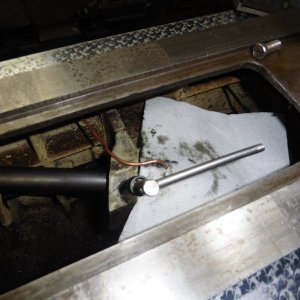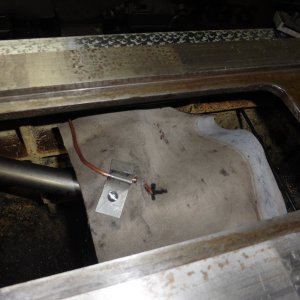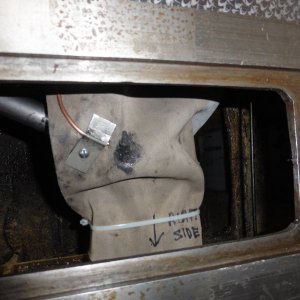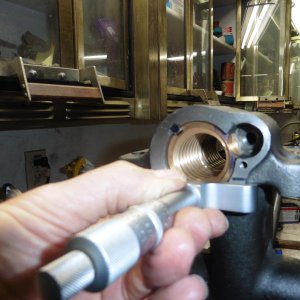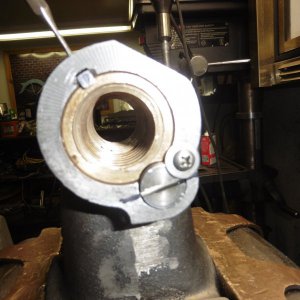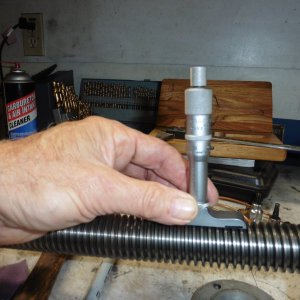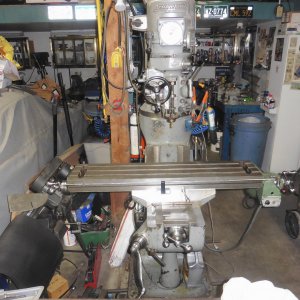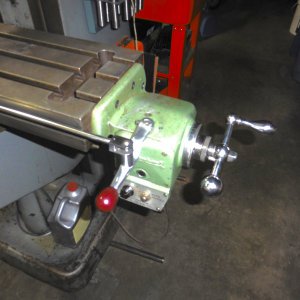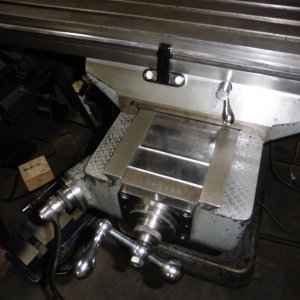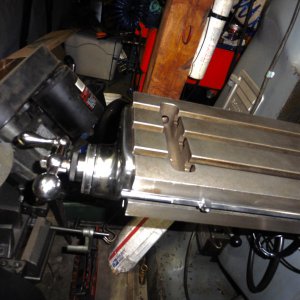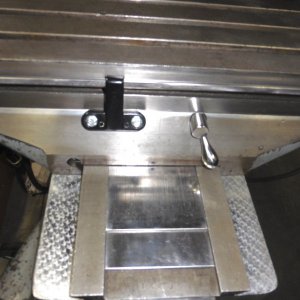- Joined
- Feb 1, 2018
- Messages
- 1,868
I have been replacing Bridgeport screws and nuts for 1/2 a century. The older models the nuts were split or cut like the OP's first picture. Then around 25 years ago when you ordered nuts from Bridgeport they came as a 2 piece that helped reduce the backlash on the entire thread and not the old ones that had a Philister screw bending one side in. The newer ones had 2 Bijur tubing goes to the top and bottom nut, the old ones you lined up marks on the front of the table and saddle so a set screw plug above the nuts could be removed and oil was squirted down the hole and the hole in the bracket to feed the Y nut too. But many people never knew about the set screw so the Y axis never got oil. Most squirted oil on the X axis screw only. I would never use grease on that Z axis bevel gear assembly as it will get contaminated with crud and chips and it will wear the gears 3 times as fast IMHO.
One thing too. If the ways are worn remove the pins that align the end screw brackets and with the cap screws finger tight, crank the feed screw to the extreme in position and then tighten the bracket. Then re-drill the pin holes and install spring pins. If You don't do that the close you screw the bracket to the center it will bind. Never hurts to re-engineer a machine as long as it gets better. Rich
One thing too. If the ways are worn remove the pins that align the end screw brackets and with the cap screws finger tight, crank the feed screw to the extreme in position and then tighten the bracket. Then re-drill the pin holes and install spring pins. If You don't do that the close you screw the bracket to the center it will bind. Never hurts to re-engineer a machine as long as it gets better. Rich


